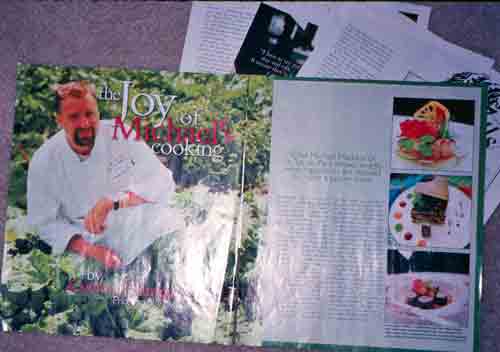(This article appeared in the November 2000 issue of North Shore Magazine. It was the last piece I’d do for Tom, my first editor at the magazine. By the January 2001 issue, there’d be a new editor—fortunately, one with whom I enjoyed working for as long as she was at the magazine. However, Tom was the editor who accepted my first piece at North Shore, so I was sorry to see him go. As for the story, I loved interviewing these women—and I still smile when I see their products in stores.)

Though it was early, the big tent at the Long Grove festival was already bustling. However, it was not yet difficult to reach the tables where the free samples were being handed out. At the first booth, I savored bits of chicken cooked in a variety of tasty sauces. The garlic and herb was my favorite. I smiled at a young woman who was busy with toothpicks, and said, “Really delicious.” Then I moved on.
At the next booth, another woman was handing out samples of outrageously rich cake. I smiled again, then moved farther down the same booth, where I was offered a sliver of herb-basted turkey. Yum. I absently turned over the package, and noticed that it was made locally. I looked up at the cheerful woman behind the counter and said, “This is your company, isn’t it?” She replied that it was, then launched into her favorite stories about her business and her customers. I got her card, then headed back to the first booth.
The jar told me that the sauces were made in Wheeling. Now, I keep sufficiently abreast of food trends to have heard that women were having an impact on the specialty food business, but for some reason, I had never thought of it as happening here, in Chicago’s suburbs. I thought it was in New York, or maybe Los Angeles, but Wheeling? Yes, the young woman behind the counter was the business’s founder and owner. I got her business card, too. Continue reading











